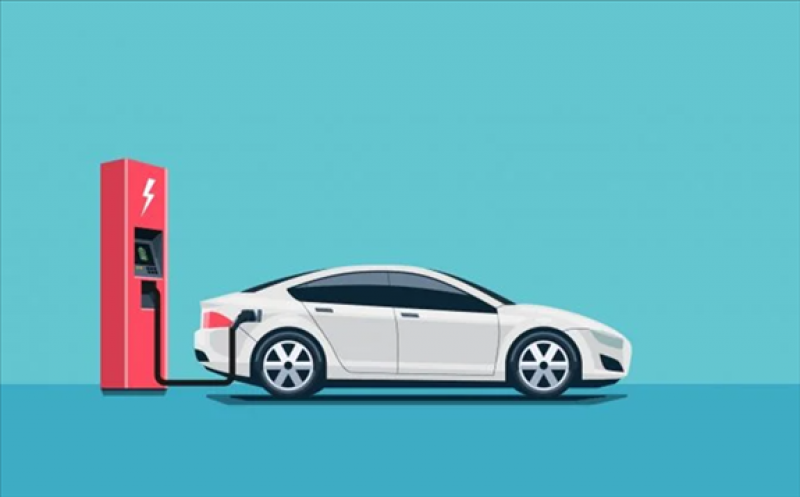
Rather than posing a threat to the grid, electric vehicles are beginning to help to solve Europe's grid flexibility problems.
EVs are already playing a role in grid-balancing markets in Norway, Sweden and the Netherlands. EVs have bid into the Dutch secondary reserve market, coordinated by German virtual power plant firm Next Kraftwerke. And Tibber, the company behind the bids in Scandinavia, is now gearing up to do the same in Europe’s largest economy, Germany.
Tibber classes itself as a “digital energy company” offering consumers, via an app, a (relatively) frictionless way to switch to a different power provider. It essentially replaces a customer's existing power supplier but using a very different pricing model. PayPal co-founder and venture capitalist Peter Thiel has invested $12 million via his Founder’s Fund.
Tibber charges a flat fee, then passes on the wholesale price that it pays for electricity to customers without pocketing any markup on individual kilowatts. The company also offers energy management services to help customers lower their electricity consumption — something Tibber isn't financially motivated to inhibit.
Vehicle-to-grid services represent another growth driver. Following a 1-megawatt test run in June, thousands of Tibber customers’ vehicles are now bidding into Sweden’s primary reserve market in what Edgeir Aksnes, CEO and co-founder, calls a “swarm.”
To offer grid flexibility at scale, Tibber needs lots of customers. Aksnes founded the company after a career developing software for utility companies and believes its payment model will help them build up a base of subscribers very quickly.
"The business model of these companies [the utilities] is the absolute opposite of what we need as a planet,” Aksnes said in an interview, pointing to the lack of incentive for them to help people cut their consumption when pricing is on a kilowatt-hour basis. “There’s basically been no innovation for decades…so it is ripe for disruption,” he said, adding that the prevailing attitude among many utility executives he has worked with aligns with a Swedish proverb: "Do not wake the sleeping bear."
Aksnes claims Tibber's model results in customer power bills that are 20 percent lower than what incumbent providers offer. Customers are not required to have a smart meter, but Aksnes says smart meters help people get more out of Tibber’s model. Throw in smart thermostats, lighting and a bidirectional EV charger, and the benefits continue to mount up, he says.
Aksnes is bullish on the size of the contribution that EVs can make to flexibility services. “We ran some calculations and demonstrated that an early-adopter market like Norway could have all of its grid flexibility requirements provided by EVs sometime between 2025 and 2030." EVs have a 50 percent market share among new vehicle sales in Norway.
Tibber estimates that around 200 EVs are needed to provide 1 MW to the flexibility markets where the company is currently active. The reality is that some vehicles will be disconnected at any given time. In Sweden, Aksnes says the company has access to tens of thousands of EVs but typically bids thousands of vehicles at a time.
Scaling challenges despite EV takeup
Tibber is eyeing Germany next after its successes in Scandinavia. Once the red tape is clear, Germany would be a big prize, not just in terms of power customers, but also for those flexibility services. The German grid is constrained, and as the likes of Volkswagen launch an array of new all-electric models, the EV outlook is strong.
Germany has cut the tax rate on electric vehicles from 19 to 16 percent and doubled subsidies on cheaper vehicles to €6,000 ($7,000).
Deloitte expects EVs to claim a 40 percent market share of new car sales in Europe by 2030. That figure will surpass 20 percent before the middle of the decade. With 15.3 million vehicles of all fuel types sold in 2019, Tibber’s potential swarm has lots of scope for growth.
Those opportunities look attractive in isolation, but there are still challenges to consider that could make it hard for flexibility via vehicle-to-grid (V2G) to hit the heights Aksnes forecasts for Norway.
“Governments are starting to ramp up charging infrastructure, but there are no requirements for that to be V2G-ready,” said Rory McCarthy, principal analyst for energy storage at Wood Mackenzie Power & Renewables, in an interview.
The U.K.’s botched smart meter rollout is a bad omen for this. Responsibility for the rollout was given to the utility companies, leading to a lack of standardization or long-term thinking.
Millions of first-generation (SMETS1) meters went "dumb" if a customer opted to change electricity suppliers, as the meters were proprietary. At the same time, the government encouraged people to switch suppliers regularly in order to find the best deal, an insufficient solution to the increasingly politicized cost of rising household utility bills. A number of power suppliers decided to pause their rollout until the more advanced SMETS2 meters were available. In 2019, 4.5 million smart meters were installed, but one-third of them were the less-desirable SMETS1 units.
With multiple EV charging standards in the market, the failure to standardize offerings was another pitfall, McCarthy said. Without smart, two-way charging infrastructure, the opportunity for EVs to provide distributed flexibility resources will be limited.
Aksnes says Tibber has been "picky" about which charging hardware it worked with, as it wants to be able to dial charging and discharging up and down in 500-watt increments, meaning the technical bar is quite high.
Even with the right infrastructure in place, the speed of response and the amount of power EVs can send back down a local residential connection will be limited compared to purpose-built stationary battery assets. There will be competition to provide flexibility from gas peaker plants, other demand response sources and utility-scale battery deployments.
That said, McCarthy believes that if the challenge of managing large volumes of distributed assets can be solved elegantly, the benefit of combining flexibility at the local level with other solutions is an attractive one.